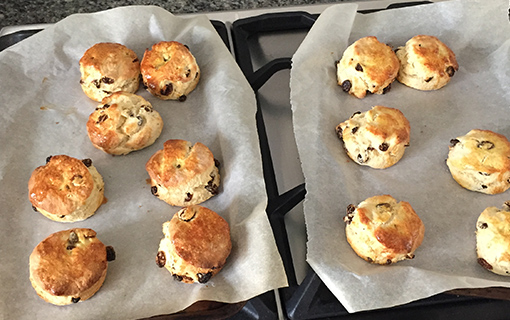Helena shares her learning from fussy eating and weaning masterclass
26 April 2021

This year, third-year students attended a masterclass led by nutritionist Annie Denny. The class explored the developmental stages of feeding, dos and don’ts during weaning, helping children develop a liking for healthier foods, supporting children with special educational needs and disabilities, and techniques for supporting children to become more adventurous eaters.
Helena looks ahead to how she will put what she’s learned during this masterclass, along with the other skills she’s acquired during her time at Norland, into practice.
Please introduce yourself
I am Helena, in Set 42, and I’m originally from Worcestershire. I’m currently in my third year at Norland and I am very excited to be starting my Newly Qualified Nanny (NQN) year from September. Before coming to Norland, I studied a Level 3 BTEC in children’s play, learning and development.

Reflect on the masterclass with Annie Denny.
The weaning and fussy eating masterclass led by nutritionist Annie Denny was very insightful and incredibly interesting. Annie did a great job at explaining multiple techniques and how and why they work. The knowledge shared allowed me to think more deeply about my own practice and how I could use these approaches in the future.
I will definitely use the new skills I’ve learned, rather than other common methods such as asking a child to have ‘just one more spoonful’ as this does not validate the child’s feeling of being full. This can create confusion for a child as they get older because they may not recognise the feeling of being full.
What did you take away from the masterclass?
I love messy play and I have no fear of being covered in paint or shaving foam. But before the masterclass, I did not think of using food in messy, sensory play. As this is exactly what baby-led weaning involves, then why shouldn’t a toddler have the same experience? Having new foods in a tuff tray to just see, smell, hear and touch is a brilliant idea to expose them to a pressure-free, fun environment. If a child does not want to touch the food with their bare hands then maybe they will happily poke it with a stick or a paintbrush instead.

How common is fussy eating?
Fussy eating, known as the neophobia stage, usually starts at around two years of age. It’s a healthy legacy from our evolution, to ensure that children do not eat potentially dangerous foods. To support children with developing more adventurous eating habits, it’s important to remove any pressure and to approach mealtimes with the view that ‘this is on your plate today, it is your choice if you would like to try it’. Any new food should be accompanied with one of the child’s favourite foods. If the child does not like the new food on the same plate, try the new food on a side plate instead to help ease any anxiety. This approach encourages exploration of the new food through sensory experience, which I find works extremely well.
Is it normal for a child’s sense of taste to change regularly?
This occurs frequently and is very normal. A child may need to try a food around 15 times before they can truly decide if they like it or not. Keep offering these foods even if they are not eaten. When you do reintroduce it, again keep it with a ‘safe food’ for them as if you were introducing the food for the first time.
I always think that making pizza is a great way for children to get back into vegetables. Give the child different veggies to put on their pizza and maybe indicate they need to choose two or three. Pizza can be very versatile with toppings so having things like peppers, sweetcorn, onion, mushrooms and tomatoes on offer is a great way to get different vegetables into a child’s diet.

What tips do you have for weaning and trying new foods?
When weaning a child, try not to introduce sweet foods such as fruits and root vegetables first. Instead introduce foods on the bitter side, such as broccoli, cabbage, spinach and aubergine. This is because bitterness is a natural protection for humans to prevent us from potentially poisonous foods, such as deadly nightshade. If a child develops familiarity with bitter flavours from an early age then, as they grow (even into adulthood), they will be more likely to continue eating and liking these foods.
My second top tip for introducing new foods includes allergens. Potential allergens such as tree nuts, peanuts, eggs or fish should be given on their own first, so that allergens can be pinpointed. As someone with a tree nut allergy, I highly recommend having children’s antihistamines on hand in case of a reaction.
My third tip is to eat with children. This shows the child that you are also eating the new food and enjoying it (even if you are not keen on the food, keep that smile!) and ask questions such as ‘What does this food look like? Feel like? Sound like?’, rather than simply saying ‘This food is delicious! Why don’t you try it?’, which then puts pressure on the child. Having conversations, other than about food, also takes the pressure off eating. These conversations could be about the weather, all the activities you have done together today or what might happen the following day.
Food and nutrition is taught as part of the Norland diploma. To supplement what students are taught throughout the course, our value-added curriculum includes a range of masterclasses including guest lectures such as Annie Denny’s which provide students with even more knowledge and understanding to implement in their practice.







